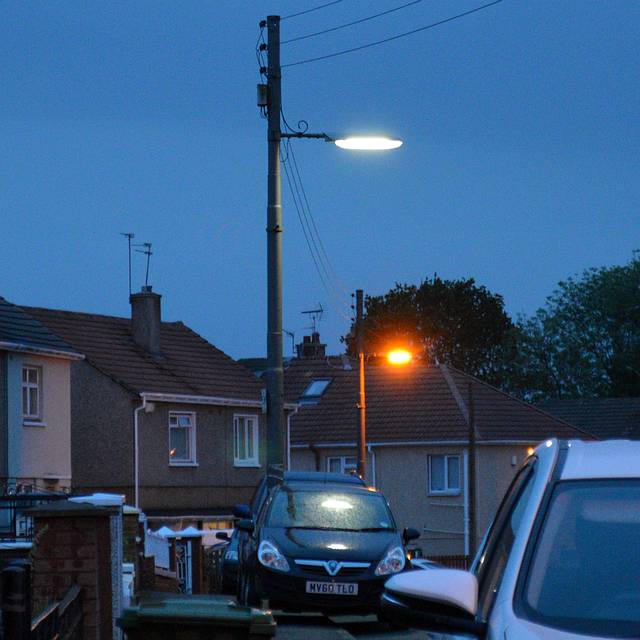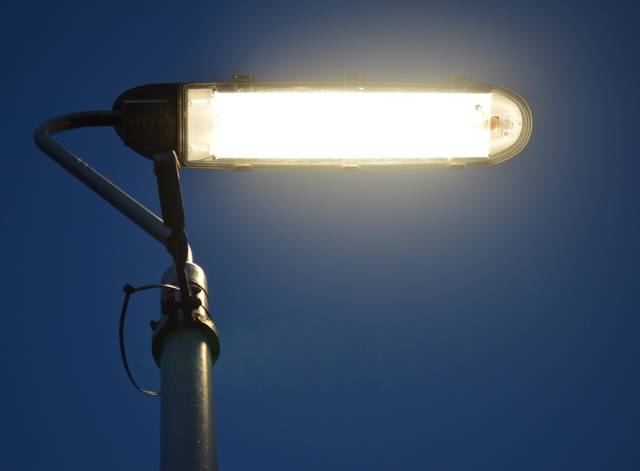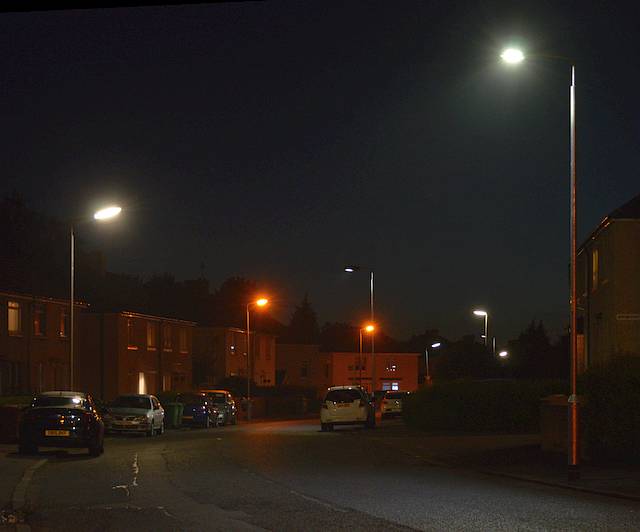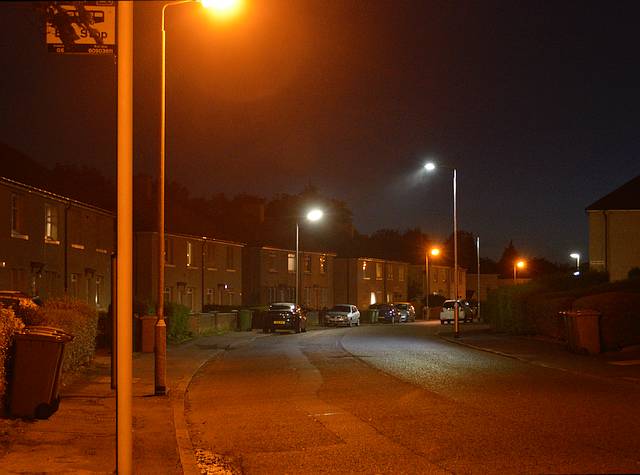I’d been toying with the idea of taking some pics under Ye Olde Sodium Street Lights (the LP or low pressure type) for a while, and suddenly realised the crazy days of DST (or whatever) were almost upon us again, and I would soon have to go out late if I wanted to play this game.
The reason I hadn’t managed it sooner was simply a matter of not having though of it sooner.
There are now very few streets left that have not been converted to LED, were already fitted with white fluorescent lamps, or have had most of their light replaced by LEDs when old lamps failed and were replaced.
I couldn’t find a complete street of sodium lights as they all seemed to have at least one, and usually a lot more, white lights dotted along their length.
I’d almost given up, or thought I’d have to go for some long walks (or rides in better weather), then literally turned into a nearby street and realised I was looking at what I hadn’t been able to find when I was out hunting.
The sodium lighting issue
I suspect most people are unaware of the simple fact that a (low pressure) sodium light emits just one single colour of light (well, two actually, but the two are so close as to make no difference for our purpose here). This makes it quite different from white light, which is a mixture of all the colours of the spectrum, and why white balance is critical. Again, that’s another story.
However, the biggest effect this difference can have on photographs is that while a colour pic taken under white light can be edited to correct or alter its white balance (since it contains all the colours that made up that original white light), the same is not true of a pic taken under sodium lighting. It contains yellow, and ONLY yellow.
I remember the first time I tried to apply colour tools to a street pic (taken on film, of course) – and the sledgehammer of enlightenment struck hard as everything failed, and I realised how stupid I had been.
After all these years, I was curious to see how such pics looked using digital cameras.
Back in the film days, I just didn’t shoot colour in the dark. It was usually a waste of time since everything was going to be yellow. B&W was simpler, and usually looked better.
I wasn’t out to do anything clever with these pics, just see how they looked, and if playing with setting made any great difference.
Bear in mind I don’t use a tripod/support, so rely on tech wizardry for my low light hand held pics.
In terms of processing, all the pics received a similar amount of boost to raise shadow detail only, and a slight reduction in the exposure around the street lights themselves.
Although I didn’t include an example (I think it looks pretty bad now), I did throw these through the auto adjustment tool I was stuck to a few years ago. It effectively just lifts all the shadow and mid-range details far too much, and is not adjustable. It’s good, just not subtle.
I think it used to be acceptable in those days because the camera sensor I had back then wasn’t so good or sensitive as those I use now.
No need for me to include B&W or greyscale versions – if you’re that keen, it’s easy to do online now.

I lost the closest street light, to see how it affected the overall exposure.
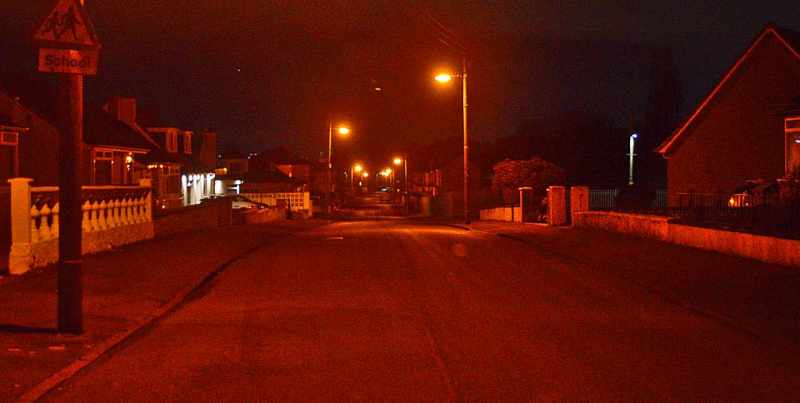
Raising more shadow detail – this can wash out areas and lose detail if overdone.
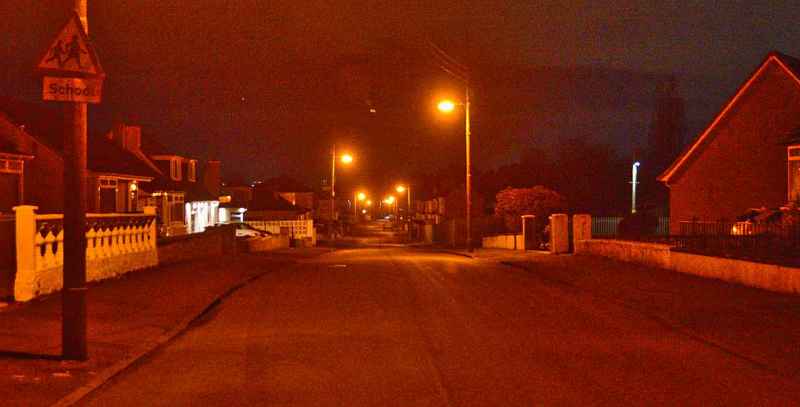
I just moved along a bit in order to catch the lit house, and catch the difference when there is a genuine white light illuminating part of the scene.

The last shot is just the same street, but from the other end.
The exposure of the street lights seems to have been noticeably different compared to the first shots. No idea why. I can’t really see that much difference in the rest of the scene.
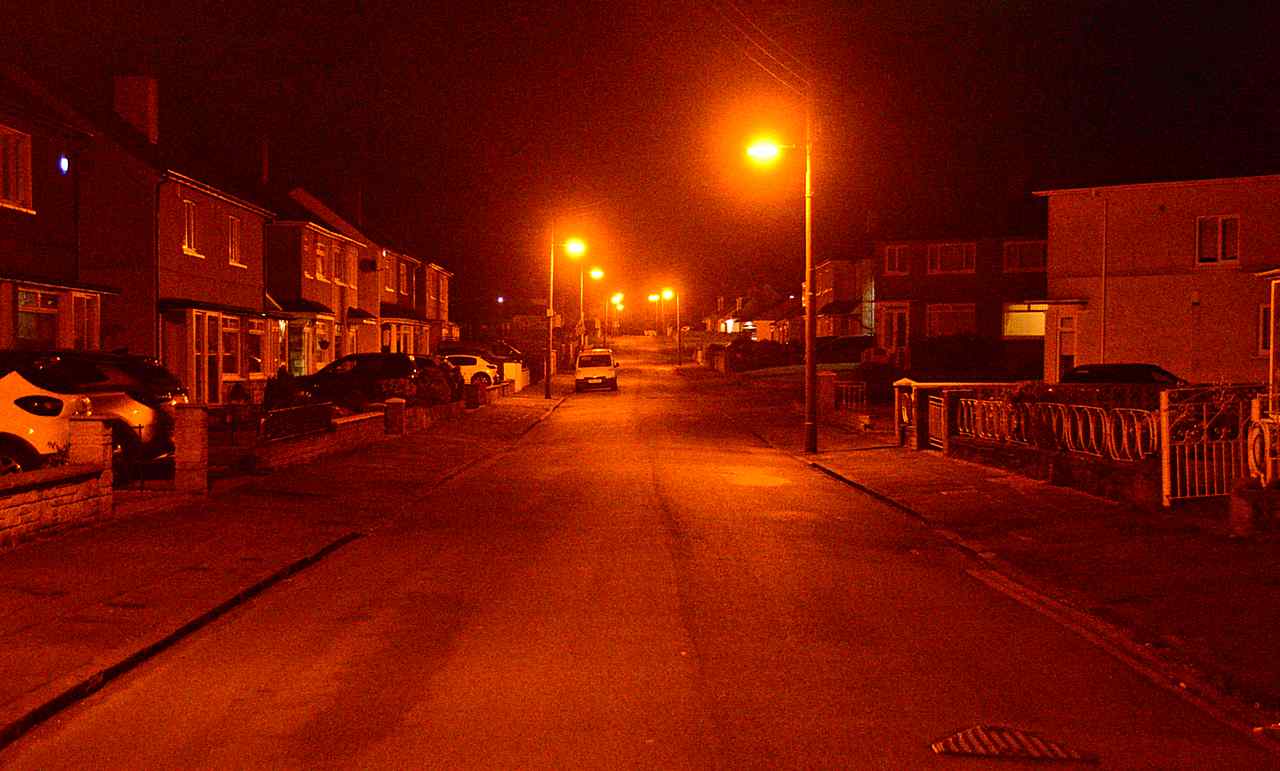
It’s funny looking at the ‘Pics from the past’.
Apparently, some people like this effect so much they’ve been complaining about white/LED, and campaigning to have sodium street lights restored.
They’re welcome to it and, I suspect, their scratchy clicking vinyl records too.
I’ll go with all the modern, improved versions.




